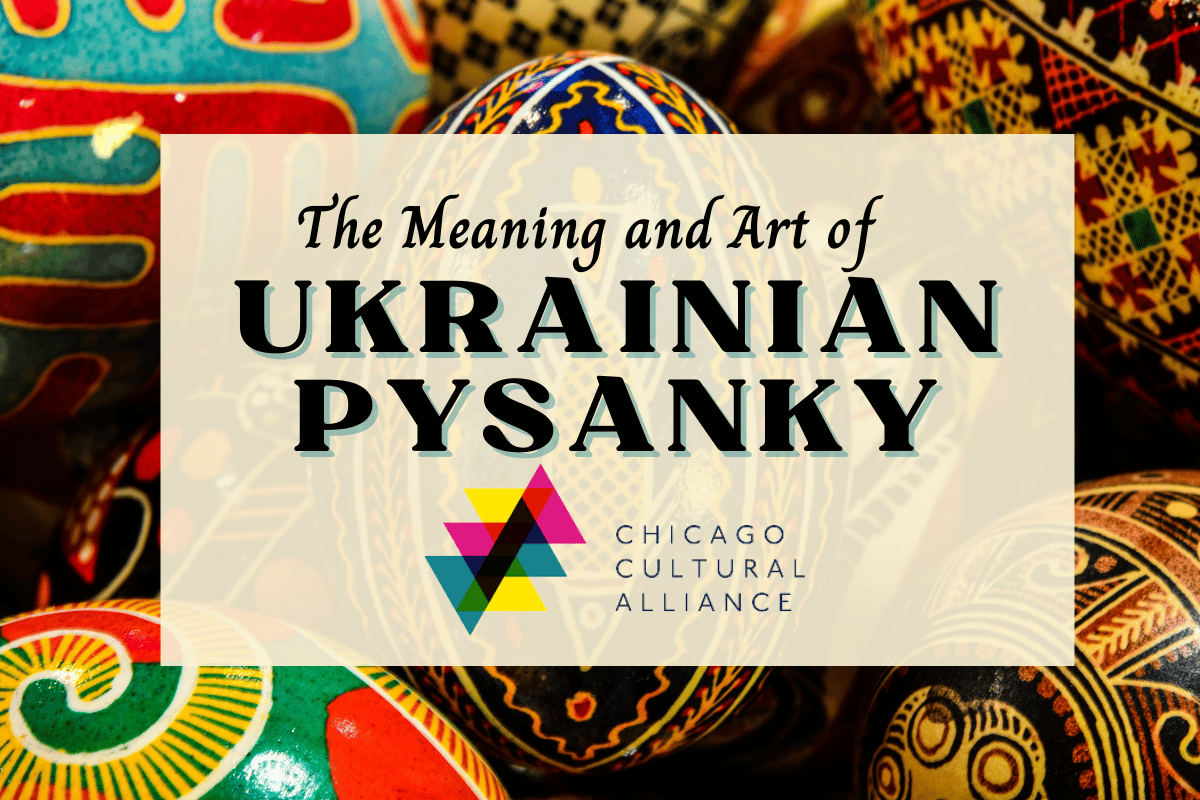
Recently, I joined a workshop on the art of Ukrainian pysanky hosted by the Ukrainian National Museum, a Core Member of the Chicago Cultural Alliance. At the workshop, every participant created their own pysanka, a traditional Ukrainian Easter egg. Afterwards, I spoke with the workshop’s host, Anna Chychula, about this traditional art form from Ukraine. She also shared with me the story of a special “Resilience Pysanka” that she created in partnership with the Chicago Cultural Alliance, the Field Museum, and the Ukrainian National Museum.
The Meaning and Art of Ukrainian Pysanky
A pysanka (plural: pysanky) is a Ukrainian Easter egg, decorated with traditional Ukrainian folk designs using a wax-resist (batik) method, according to Chychula. The name comes from the verb pysaty or “to write,” because the designs are “written” on the egg with beeswax using a tool called a kystka. The raw eggs are colored with dyes, and the wax is melted away, leaving vibrant, intricate patterns. At the end, each egg is carefully hollowed out and preserved, making them delicate, beautiful talismans.
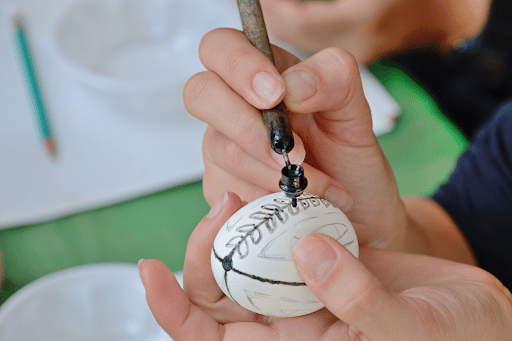
An artist writing a pysanka with a kystka. Photo from Canva.
Many legends and traditions surround the pysanky. Anna explains that one common belief is that with every pysanka created, a link is added to a great chain that binds evil (in the form of a great dragon) and helps prevent it from wreaking havoc on the world. Therefore, the pysanka is a powerful symbol of hope and renewal.
Sharing the Art of Ukrainian Pysanky
Anna teaches workshops and shares her art online. She explains that she learned the art of Ukrainian pysanky from her mother as a child. “It’s just a part of my culture,” she explains. “But then in high school it became more about showing off my talents, and I started to do it more and more.”
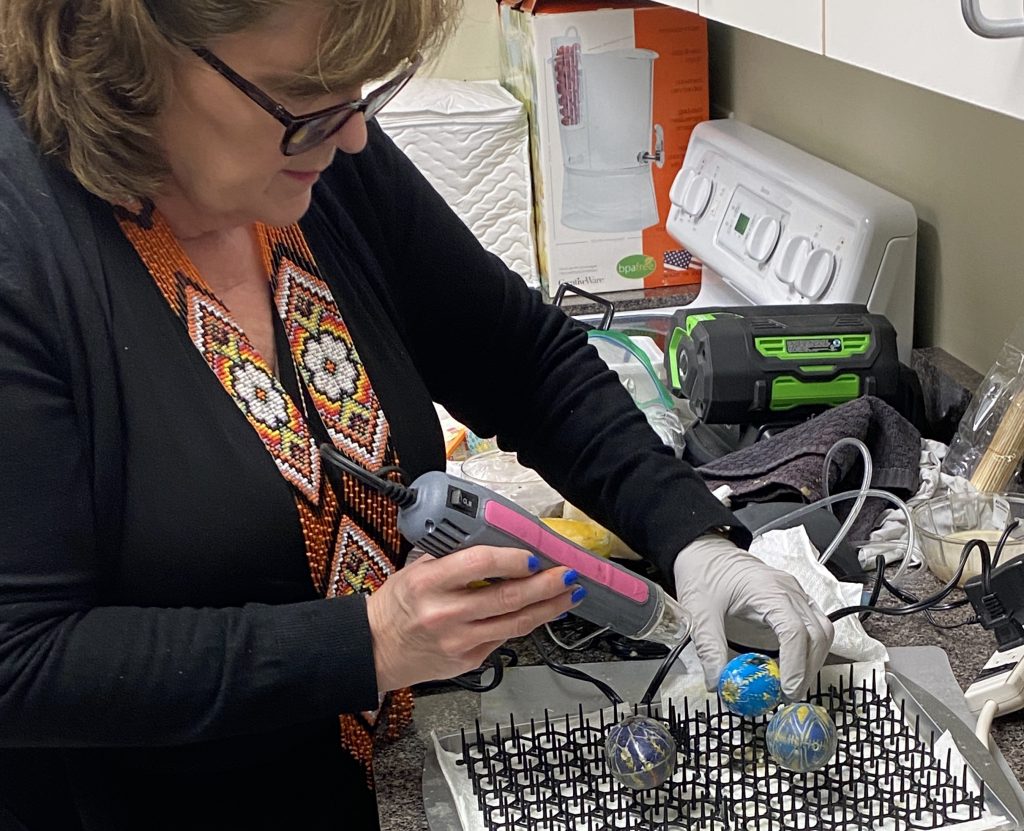
Anna helps prepare students’ pysanky at a workshop at the Ukrainian National Museum in April 2022. Photo by Marie Rowley
Now she sees it as a vital way to share her Ukrainian culture. Every workshop is taught “as a mini-immersion into Ukrainian culture,” she explains, not just a crafting how-to. “My pysanky are my ambassadors,” she says. “People come to admire them and then I can ask, ‘What are your Easter traditions?’ I get to connect with people at that level, and talk about the things that unite us.”
The Origin of the Resilience Pysanka
In 2020, the Field Museum partnered with many cultural organizations in Chicago, including the Chicago Cultural Alliance, to begin an effort called the Pandemic Collection. The Pandemic Collection is “an ongoing project to document the ways that COVID-19 is transforming our relationships to one another, to our homes and landscapes, to the ways we care for ourselves and others, to powers that are greater than us, and to new powers that pandemic living has let us access.”
When the Alliance reached out to Lydia Tkaczuk, the director of the Ukrainian National Museum, about participating in the project, she knew they wanted to do something a little different. The pysanka, a symbol of renewal and hope, became an obvious choice for their contribution to the collection. She contacted Anna about designing a special Resilience Pysanka for the Pandemic Collection.
The Design and Symbolism of the Resilience Pysanka
Drawing on her decades of experience sharing the art of Ukrainian pysanky, Anna began by carefully planning out a design that was steeped in meaning and symbolism.
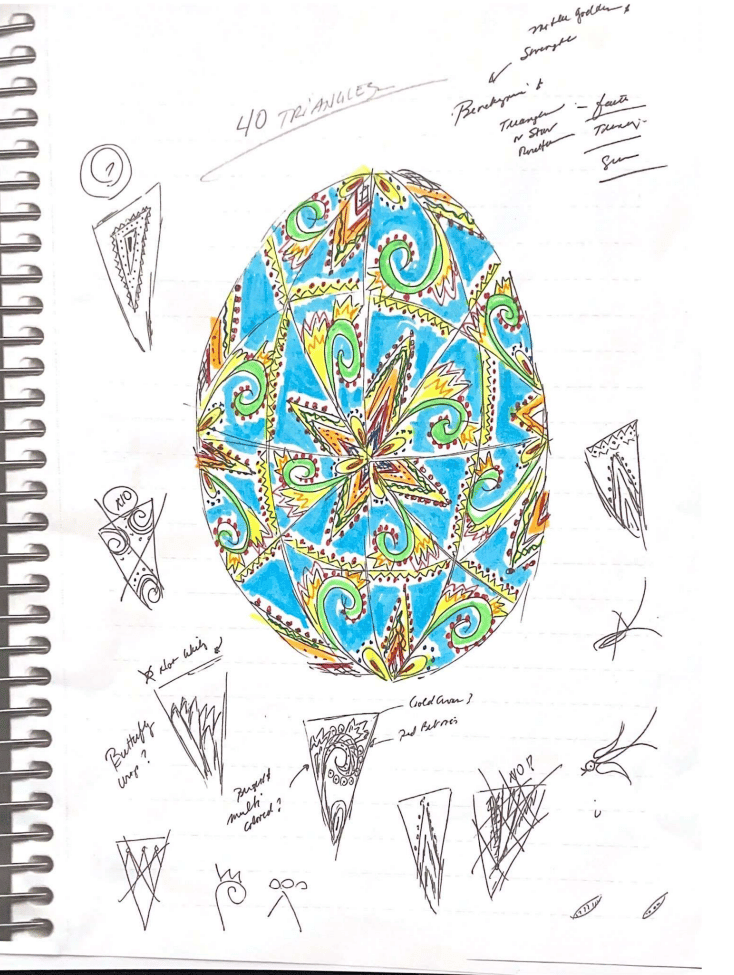
One element she chose was 40 triangles. In traditional Ukrainian pysanky design, a prayer for protection is said with each triangle written on the egg, and 40 is a sacred number. Anna also incorporated the design element of the Berehynia, or mother goddess. Like nature itself, she can be positive or negative, making this symbol particularly resonant in 2020.
(Image on left: One of Anna’s sketches, planning the design of the Resilience Pysanka. Courtesy of Anna Chychula.)
Anna also chose the colors for the Resilience Pysanka with care. Every color in a traditional Ukrainian pysanka has meaning, and this one was no different. White symbolizes purity, yellow represents wisdom, and so on. Anna explains that she did not use any black in the pysanka, because she wanted all the colors to represent only positive emotions and resilience.

The progression of colors in the Resilience Pysanka from lightest to darkest, as Anna created it. Courtesy of Anna Chychula.
Anna also chose the colors for the Resilience Pysanka with care. Every color in a traditional Ukrainian pysanka has meaning, and this one was no different. White symbolizes purity, yellow represents wisdom, and so on. Anna explains that she did not use any black in the pysanka, because she wanted all the colors to represent only positive emotions and resilience.
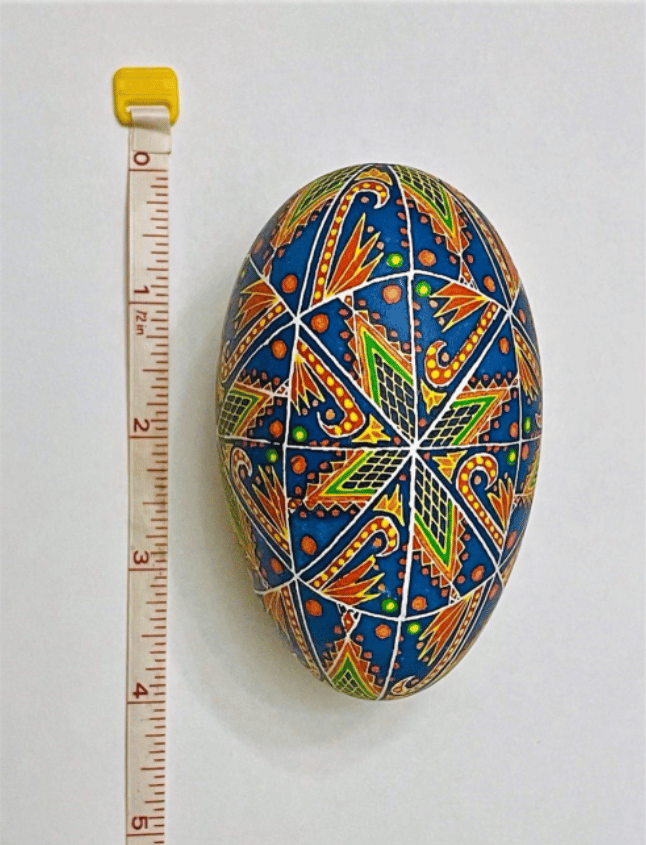
In the end, Anna created two pysanky in this design, with nearly identical colors. One was donated to the Field Museum’s Pandemic Collection, and the other remains in the Ukrainian National Museum.
(Image on left: The finished Resilience Pysanka, on a hollow 3 ⅞ inch goose egg. Courtesy of Anna Chychula.)
The Resilience Pysanka Takes on New Meaning
In February 2022, Anna and the staff of the Ukrainian National Museum were invited to the Field Museum to view the Resilience Pysanka on display in the main exhibition hall. The day before their visit, Russia invaded Ukraine.
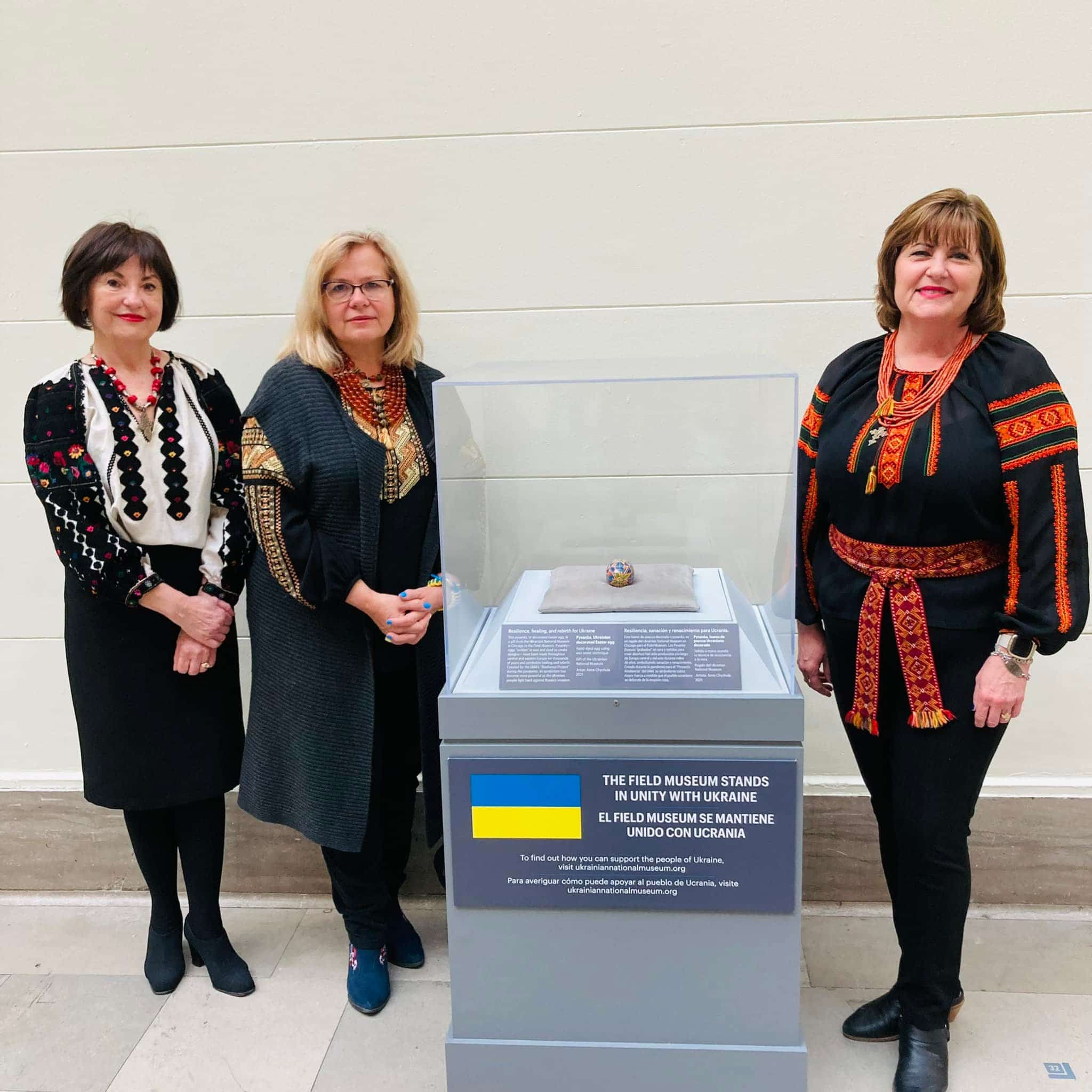
Lydia Tkaczuk (Ukrainian National Museum Director), Maria Klimchak (Ukranian National Museum Curator), and Anna Chychula at the Field Museum. Courtesy of Anna Chychula
“It was surreal,” Anna says. “Very poignant and moving, but surreal.” When planning the pysanka two years ago for the Pandemic Collections project, she knew other artists were making designs that referenced COVID directly. “I didn’t want to put a mask design on the pysanka though,” she explains. “I was digging deeper, thinking about the meaning of resilience. So now it’s like it happened just like it was supposed to. It speaks for the resilience of Ukraine in this different way. It symbolizes that we will prevail, we will find a way through.”
Very special thanks to Anna Chychula for sharing her story and her beautiful art and culture with me.
Marie Rowley, Marketing and Communications Manager
